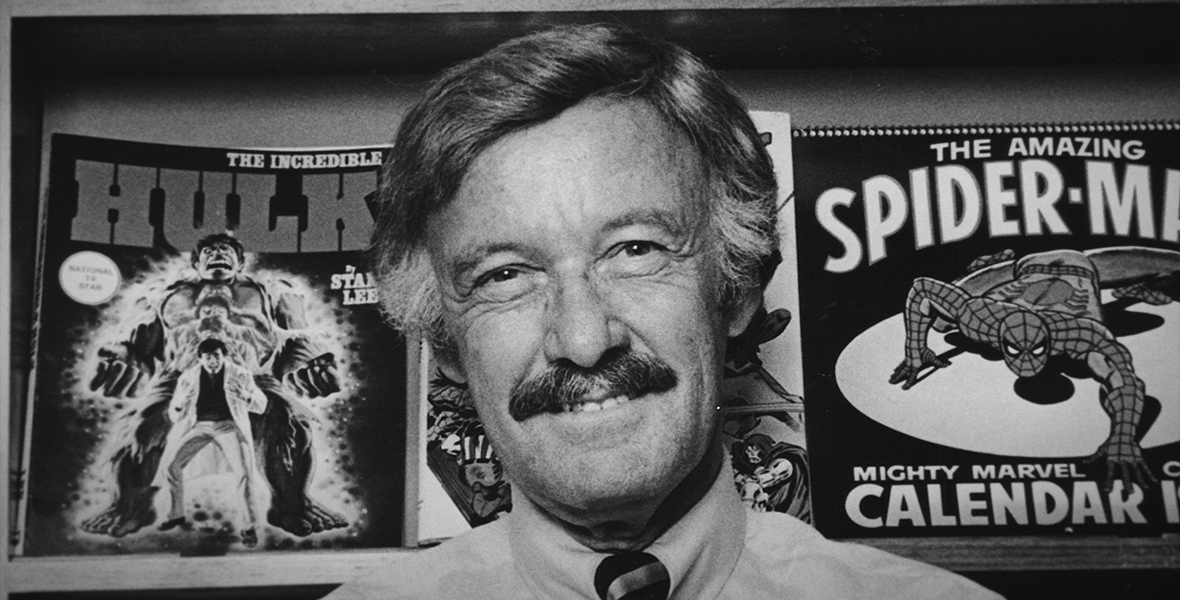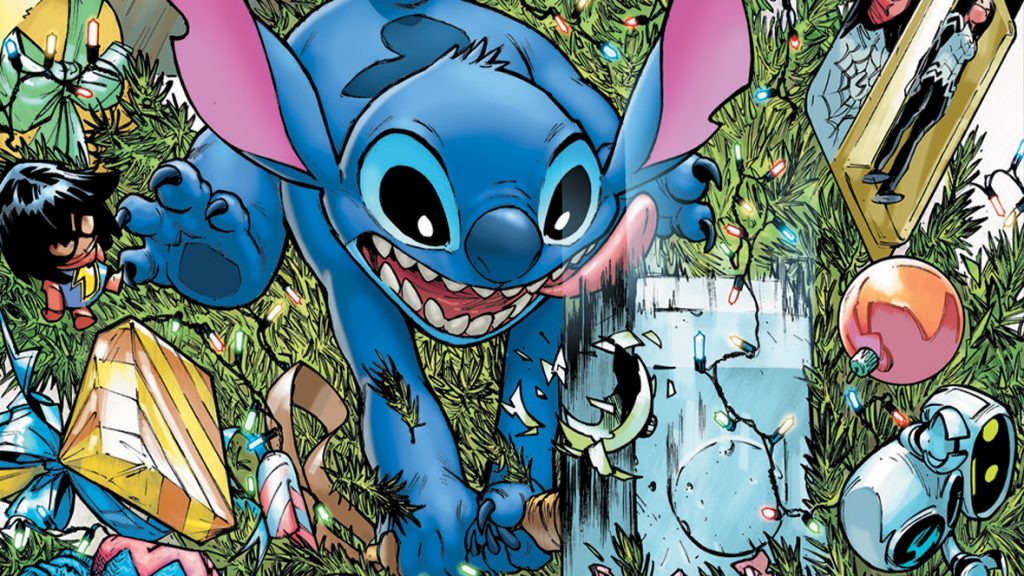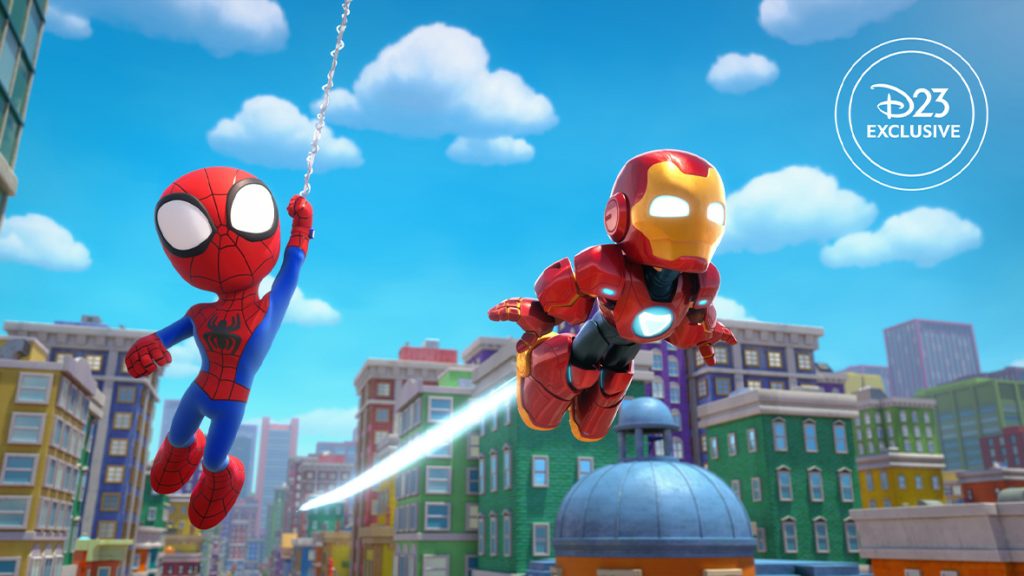By Zach Johnson
Everyone knows Disney Legend Stan Lee... but they’ve never seen him quite like this.
From Marvel Studios and acclaimed director David Gelb, Stan Lee is the official documentary about Lee and his journey to become one of the most influential people in the world of comic books and pop culture. Tracing his life from his challenging upbringing as Stanley Lieber to the meteoric rise of Marvel Comics, the film tells Lee’s story in his own words. Using only archival material—from personal home video, interviews, and audio recordings—the film examines Lee’s origin story and what emerged from it: a universe of stories with three-dimensional characters that continue to resonate with people worldwide.
As Stan Lee makes its streaming debut on Disney+, Gelb joins D23: The Official Disney Fan Club for a Q&A.

D23: What made you want to tell Stan Lee’s story in this format?
David Gelb (DG): I’ve always been a big fan of Marvel Comics; they were my go-to when I would go to the comic book store. It had so much to do with the humanity, the relatability, and the interconnectedness of the characters, as well as Stan’s own voice—whether it was little editorial notes or things from Stan’s “Bullpen Bulletins.” My mom got me a big volume of Marvel Comics from the ’60s that had classic, hand-picked fan-favorite stories, and I also had How to Draw Comics the Marvel Way. Stan’s writing was always in my head when I was a kid. The way he used big words, he didn’t talk down to his fans. I’d have to go into the dictionary to look up what “loquacious” meant, for example. He had an immense respect for his readers, and he tried to bring comic books to a place where they really meant something. It was very inspiring to me as a kid; it was my favorite thing. I made a career out of telling stories of very inspiring people who have achieved great things, and so when the opportunity to make this documentary about Stan came to me, I leapt at the chance. I was really humbled and honored by the challenge of doing it. I wanted to make something he would’ve loved—that tells his story from his point of view and does it justice.
D23: With previous projects, you had access to your subjects. That obviously wasn’t the case here, as Lee is no longer with us. After sifting through archival material, how did you fill in the gaps in instances where he wasn’t available to elaborate or explain himself?
DG: That was the greatest challenge, even with the thousands of hours of material. He did so many interviews and so much writing; he was probably one of the most prolific authors ever. There were moments where I wished I could just call him and ask him what he meant, or I that could ask him to follow up on something. But thanks to our research team, we’d isolated the story points we really cared about, and then we really dug deep to find the pieces we needed to tell Stan’s story. We wanted to make the film a memoir of Stan’s creative life and his creative journey from his time working with Marvel. We had to figure out: How did he do it? And why did he do it? That was our compass—the humanity of Stan.
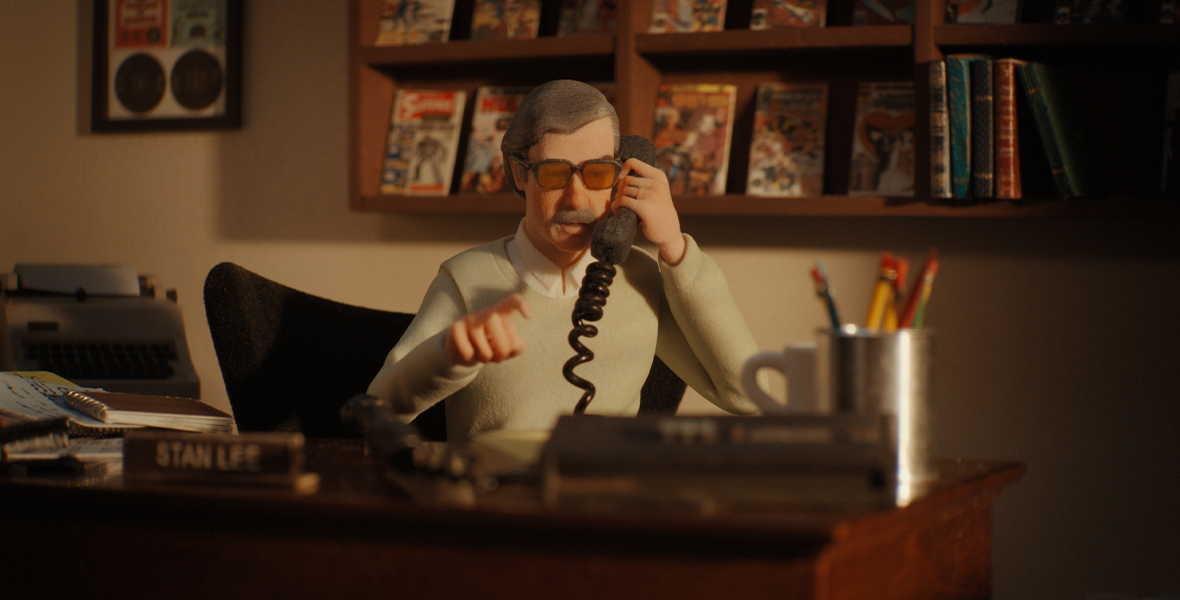
D23: Once you figured that part out, how did you put it all together?
DG: We looked at in terms of, “What are the most important things that really inspire us? Who are the characters with the most interesting origin stories? Let’s dive into those and then portray them in the most visually entertaining way we can, using miniatures and animated comic panels—all the tools of cinema, really—along with Stan’s voice.” He was the master of telling other people’s origin stories, and we wanted to tell Stan’s origin story.
D23: Lee was larger-than-life. How do you distill that origin story into an 86-minute film?
DG: That’s why we had to focus our story and make it a memoir of his creativity, because his life was very big and very complicated, and there are many facets to it. What I was most interested in was getting to the bottom of what had inspired me as a kid, which is this universe that he had created, and these unique and interesting characters that he had co-created with his collaborators. How did he do that? And where did these ideas come from?
D23: Without giving anything away, where do those ideas come from?
DG: Something Stan often talked about was how Marvel Comics is the world outside your window. Those were things that inspired him. He wanted to take reality and then, through comic books, teach lesson or make a statement about inequality. In the case of X-Men, they were an allegory for the gay rights movement and the civil rights movement. All of these things come from the real world. His own experiences as a kid had everything to do with the experiences of Peter Parker. We were so inspired by the fact that nobody had done this before—that nobody had made a vulnerable, relatable superhero. We were really moved by that. It was really about Stan Lee’s perspective of the world—as well as his co-creators’ perspective—and how he translated that through his characters. That’s why his characters mean so much to people; they’re not just random guys with superpowers. They have an origin story that means something, and they’re fighting for something that means something. They make mistakes and learn from them. That is the experience of any human.
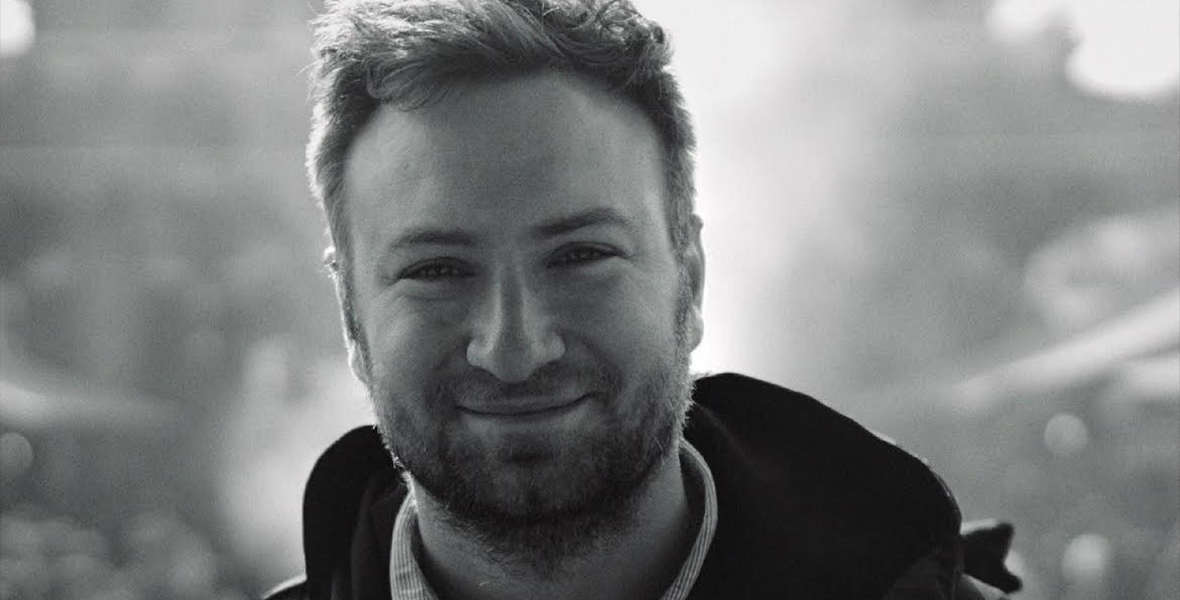
D23: Lee was an open book, but what surprised you about as you were making this film?
DG: Stan was a very sensitive person. He grew up in very uncertain circumstances in the Great Depression. He was anxious about money. He describes this moment of when he would listen to his parents arguing about money and the uncertainty it made him feel. He just wanted to get a job so he wouldn’t have to live in fear. He wanted to be able to provide for himself and, eventually, his family. He cared deeply about his family. He also went through some personal tragedies that are detailed in the film. Yes, he’s this larger-than-life character you’ve seen on TV, but he’s a real person. There is a delineation a little bit between the character of Stan Lee that he presents when he goes on late-night talk shows, cracking jokes and everything, and the real guy with real sensitivities. We cover the conflicts and the great highs and lows with his key collaborators, Steve Ditko and [Disney Legend] Jack Kirby. We have footage that shows his sensitivities and emotions regarding that—wanting to give them credit, and at the same time, standing up for what he came up with. These are real things that any person goes through in a collective creative process. We wanted to show him, just as he did with his own comic book characters, as a human being—to show him as somebody who has an urge to make an impact on the world, but who also just wants to make enough money to take care of his family, to make sure that the people working around him are satisfied and are able to keep working. It’s just very human.
D23: What do you hope Disney+ viewers take away from your Stan Lee documentary?
DG: Stan’s key message—which he talked about quite a bit—is to believe in yourself. If you have something you want to say, believe in it and you may succeed. You may not. But don’t give up on your vision because somebody else is says it’s a bad idea. Everybody said he was crazy for trying to make comic book characters that were relatable or vulnerable, that used big words. These are all things that people thought that he was nuts for, but it turned out he was right. I think that what Stan wants to convey—and what we want to convey—is that if you believe in something, go for it. And don’t let the pessimism of others bring you down.


